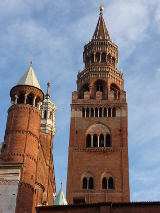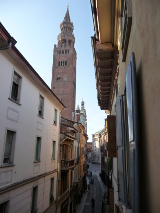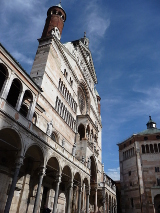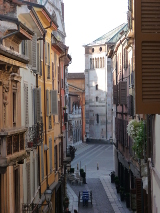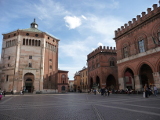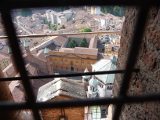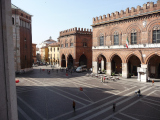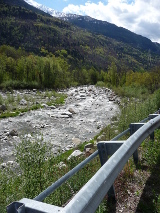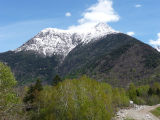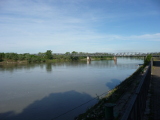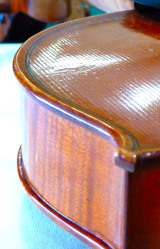The Messiah violin: a reliable history?
Nicholas Sackman
Associate Professor (retired), Department of Music, University of Nottingham, England
nicholas@sackman.co.uk
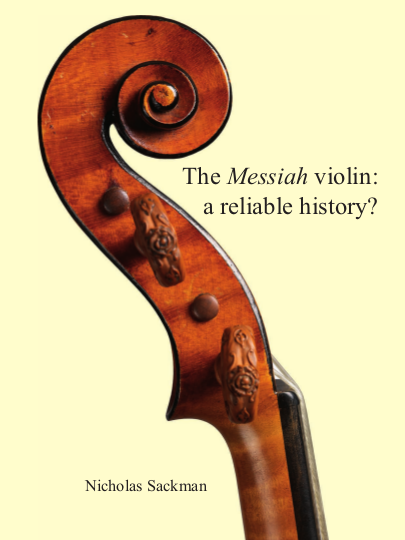
Four years of meticulous research in the museums and libraries of Oxford, London, Paris, Milan, and Cremona has resulted in the first entirely document-based factual analysis of the historical and physical reality of the Messiah violin, thus supplanting the oft-repeated mythology.
Igor Stravinsky’s Concertino for string quartet (1920):
a chronology of notation
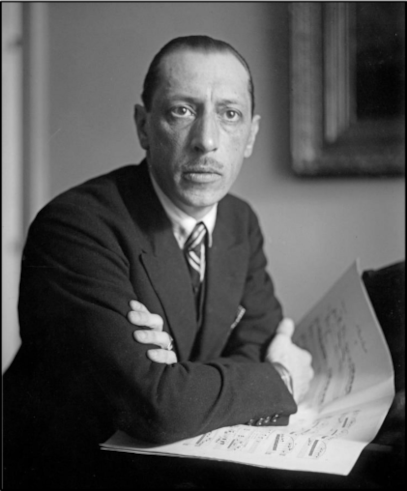
2021
Click here (33MB
PDF file; may take a moment to load) to read a detailed
and extensive study of the changing notation which affects
the Concertino for string quartet (1920) by Igor
Stravinsky. The study examines the manuscript notation
which was set down by the composer, the notational
variants which proliferated as further scores were
produced, and the discrepancies and uncertainties which
are found in the various versions of the Concertino
which are published by Wilhelm Hansen Edition.
Stradivari’s Marquis de Champeaux violin of 1707
2024
Click here to read
a study of the provenance of the 1707 Stradivari violin
known today as the Marquis de Champeaux. The violin's
known history from 1876 onwards suggests that
Podenas-Mathias-Rosen would be a more appropriate
identifier.
Stradivari's Chant du Cygne violin:
from Bertuzzi to Wurlitzer – and beyond
2024
Click here to read an
examination of the historical uncertainties which surround
the violin that may have been the last made in
Stradivari's workshop in Cremona before his death in
December 1737.
Book review: Time's Echo by Jeremy Eichler
2023
Click here to read a lengthy
and detailed review of the recently-published book by
Jeremy Eichler - Time's Echo.
A tale of two dots
2023
Click here to read an updated
examination of the documentary evidence found in Count
Cozio's manuscripts which demonstrates the one-time
existence of an extra-large violin mould which the Count
obtained from Antonio Stradivari's posthumous workshop,
and which was identified on its wooden surface by the
letters P.G..
On the trail of factual reality
2023
Click here to read
commentaries on some aspects of an article titled On
the Trail of a Russian Nobleman, published in The
Strad in June 2023.
The Bass of Spain and the Vaslin-Gallay: two cellos of Cremona
2023
Click here to read a
twin-track examination of the, at times, puzzling
parallels between the claimed history and physicality of
the 1713 Bass of Spain cello and that of the 1725
Vaslin-Gallay cello. Regrettably, definitive
resolutions of the puzzles are few.
The Princess of Polignac – Frédéric Émile, Baron d’Erlanger – and Henry Holst
2022
Click here to read
a greatly-extended investigation into the historical
background of the Guarneri del Gesù [?] violin
which would become known as the
Henry Holst. It replaces the previously posted
website article titled 'The Princesse de Polignac
violin'.
The Mackenzie violin
2022
Click here to read a short
investigation into the provenance of the Stradivari
Mackenzie violin.
The Missing Strad: the story of the world’s greatest violin forgery
2022
Click here to read a review of the
recently-published book by Gerald Gaul: The Missing
Strad; the story of the world's greatest violin
forgery (FriesenPress, 2021).
Lost: one very large Stradivari violin, dated 1684
2021
Click here to read a
detailed presentation of the descriptive text written by
Count Cozio di Salabue in relation to an extra-large
Stradivari violin of 1684 which was owned by his friend,
Carlo Carli. All the Count's measurements of the violin
are transcribed and translated. Explanatory commentaries
are provided.
Click the title to read:
The Kreutzer/Massart/Doyen/Clark Stradivari violin of 1720/1731;
also the 1686 Clark violin: a clarification
2021
John Lawson, Mary Law, George Parsons, and two Stradivari violins
2021
Click here to read an
unravelling of the tangled-together histories which
surround the 1687 Stradivari violin owned by John Lawson
and the 1692 violin which was loaned to Mary Law.
Searching for Giuseppe Guarneri del Gesù:
a paper-chase and a proposition
2021
Click here to
read a substantial (40-page) examination of the
documentary evidence which lies behind the possibility
that there were two violin makers called Giuseppe Guarneri
in Cremona - one a nephew to Andrea Guarneri, the other a
grandson.
Paganini's instrument legacy
2021
Click here to read
a documentary article which examines Niccolò Paganini's
correspondence with Vincenzo Merighi regarding the
purchase of instruments during the late 1830s, the legacy
of instruments left behind by Paganini, and the possible
connection between this legacy, Jean-Baptiste Vuillaume,
and the Countess of Stainlein cello.
The case of the Saint-Senoch cello
2021
Click here to read a
research-based investigation into the history of the
Saint-Senoch cello.
Juliette Récamier, Comte Molitor, and much confusion
2020
Click here to read an investigative study of the layers of uncertainty
and potential confusion which surround the violins which are associated
with Juliette Récamier and Comte Molitor.
The letters sent by Pablo Sarasate to Madame Amélie de Lassabathie, 1870-72
2020
Click here to access a
complete transcription and translation (with commentaries)
of the 29 letters sent by Pablo Sarasate between 1870 and
1872 to his adoptive mother, Amélie de Lassabathie, in
Paris. The letters are archived at the Sibley Library,
Eastman School of Music, University of Rochester, USA.
The L'Évêque conjecture
2020
Click here to read an
examination of some of the historical issues surrounding
the name 'L'Évêque' and the Stradivari violins associated
with that name.
Domenico Dragonetti, the Milanollo sisters, and some violins
2020
Click here to read a
detailed history of the violins which, at various times,
were owned by the famous Milanollo sisters - Teresa and
Maria - including the two instruments which were
bequeathed to them by Domenico Dragonetti.
Whence the Muntz?
2020
Click here to read a comprehensive
investigation into the history of the
two I736 Stradivari violins which were owned
by Count Cozio, neither instrument having any connection
to today's I736 Muntz violin.
Did ‘Count Sasserno’ ever exist?
2019
Click here to read an
investigation into the name 'Sasserno' which is attached
to a Stradivari violin dated 1717.
Joseph Joachim, David Laurie, and Mischa Elman: revising the provenance
2019
Click here to read a
detailed revision of the provenance for two Stradivari
violins dated 1722, both of which were associated with
Joseph Joachim. One of the violins is known today as
the Laurie, the other is the
Elman violin.
The Castelbarco violin and cello
(The Gertrude Clarke Whittall collection, Library of Congress, Washington DC, USA)
2020
Click here to read a detailed
investigation into the documentary evidence which, from
1862 onwards, apparently defines the provenance of the
Castelbarco violin and cello. The evidence is
revealed to be contradictory and unreliable and the
historical identity of the two instruments far from
secure.
Count Cozio’s measurements of his 1716 Stradivari violin:
transcription, translation, commentary
2020
Click here to
read a line-by-line transcription and translation of the
3-page text which Count Cozio wrote in May 1816 relating
to the 1716 Stradivari violin which he owned (the violin
which is thought by some to be the
present-day Messiah violin but which, for the
reasons presented in detail by the Count, cannot thus be
identified).
Count Cozio, Renzo Bacchetta, and Brandon Frazier:
documentary realities and Chinese whispers
2020
Click here to
read a comparative study of texts written by Count Cozio
which were subsequently transcribed by Renzo Bacchetta
(1950) and then translated into English by Brandon Frazier
(2007). The evidence indicates that the only trustworthy
texts are those written by the Count; translations which
are based on modernised versions of Bacchetta’s
transcriptions can be unreliable.
Pablo Sarasate and his Stradivari violins
2019
Click here to read an
evidentially-supported argument that the
1724 Sarasate violin is the ‘red’ violin which
Achille Paganini consigned to Vuillaume in 1846;
information is also provided for the Boissier
violin which Sarasate bought from Gand & Bernardel in
1888.
The letters inked on Antonio Stradivari’s moulds and the ‘analytical strategy’ employed within Antonio Stradivari: disegni, modelli, forme
2018
Click here to read a
comprehensive examination of the inked and/or incised
letters found on the Stradivari moulds which are archived
at the Museo del Violino in Cremona. The article questions
whether some of the indications of authorship which are
presented in the publication Antonio Stradivari:
disegni, modelli, forme are plausible.
Alexandre Artôt and his Stradivari violins
2019
Click here to read a
study of the multiple violins owned by, or thought to have
been associated with, the Belgian violinist Alexandre
Artôt (1815-1845). The study makes extensive use of the
Gand/Bernardel/Caressa & Français business ledgers which
are archived at the Musée de la Musique in Paris.
Niccolò Paganini’s Cannone violin and David Laurie’s ‘Canon’ violin:
some considerations
2018
Click here to read a
34-page investigation into the possibility that, in 1851,
Achille Paganini merely delivered to the Genoese
authorities ‘a’ Guarneri del Gesù violin which may (or may
not) have belonged to his father. Documentary evidence
demonstrates that a 1744 del Gesù violin was sold by Luigi
Tarisio to J-B Vuillaume (Tarisio having named the violin
Il Cannone); Vuillaume then sold it to David
Laurie. Laurie’s ‘Canon’ violin was eventually acquired by
J T Carrodus; after the latter’s death the violin passed
to Robert George Carrodus.
‘Fortissimo di voce, e quasi tenore’ (‘Very strong of voice, and like a viola’)
2020
Click here to read an
evidence-based investigation into the historical reality
of the 1724 Stradivari violin which Il Conte Cozio di
Salabue sold to Niccolò Paganini in June/July 1817. It is
demonstrated that the violin which today is erroneously
identified as the Paganini was actually a 1727
Stradivari violin which had its label tampered with (most
likely during the 1940s).
The Spanish Puzzle; Antonio Stradivari’s quartet of decorated instruments
(Palacio Real del Oriente, Madrid, Spain)
2017
Click here to read
the most detailed and comprehensive study of the four
instruments – two violins, viola, cello – which are
exhibited at the Palacio Real. Information is also
provided for Stradivari’s other decorated instruments: the
Sunrise, Hellier, Cipriani Potter, Spanish/Ole Bull,
Greffulhe, and Rode violins.
The flames are rising
(or yet another document-supported reason why Count Cozio’s 1716 Stradivari violin
is not the present-day Messiah violin)
2017
Click here to read Count
Cozio’s descriptions of his 1716 Stradivari violin and the
information provided by the Count for a 1719 violin, this
latter information confirming that his 1716 instrument had
back-plate flames rising from the centre-joint; the
back-plate flames on the Messiah violin descend
from the centre-joint.
The Jacques Francais Rare Violins Inc. sales ledgers, 1845-1938
2020
Click here to access a
complete transcription and translation of the descriptive
texts which comprise the Francais archive (Archives
Center, National Museum of American History, Smithsonian
Institution, Washington DC, USA). Each descriptive item is
accompanied by historical information about the instrument
concerned and the individuals associated with that
instrument. 300+ pages.
‘The Absolute Stradivari: the Messie violin 1716/2016’
2017
Click here to
read a review of this publication. The review reveals the
publication’s deficiencies and, in particular, questions
the information which supposedly relates to the inked
letter ‘G’ which is found in the pegbox of
the Messie violin.
John Tiplady Carrodus: a tale of seven violins
2017 Click here to read a comprehensive study of the violins owned by J T Carrodus (1836-1895). The extensive evidence demonstrates that the 1743 Guarneri del Gesù violin which is usually identified today as the ‘Carrodus’ (i.e. the violin which is currently in Australia) has no connection with the nineteenth-century English violinist.
The Habeneck violin, Count Cozio di Salabue, and Francesco Stradivari
2016
Click here to read an
examination of the historical identity of
the Habeneck violin. It is proposed that the violin
was made by Francesco Stradivari and was originally
label-dated ‘1742’. This article was published in the 2016
issue of the Journal of the American Musical Instrument
Society, pp. 197-220, and is republished here by
permission.
Stradivari’s 1714 Soil violin, peg-box letters, and Caressa & Français
2020
Click here to read
a study of the documentary evidence relating to the
neck/partial pegbox (Museo del Violino, Cremona) which, it
is claimed, was an original part of Stradivari’s
1714 Soil violin. The documentary evidence provided
by the firm of Caressa & Français in 1911 demonstrates
that this claim cannot be sustained.
Further publications
-
The Stradivari Chant du Cygne violin: a question of labelling
Published in the March 2017 issue of The Galpin Society journal (pp. 81-96). -
The case of the missing mould
Published in The Strad, June 2018, pp. 54-58. -
Beloved Mother [a digest of Sarasate’s letters to his adoptive mother]
Published in The Strad, June 2020, pp. 42-47.
